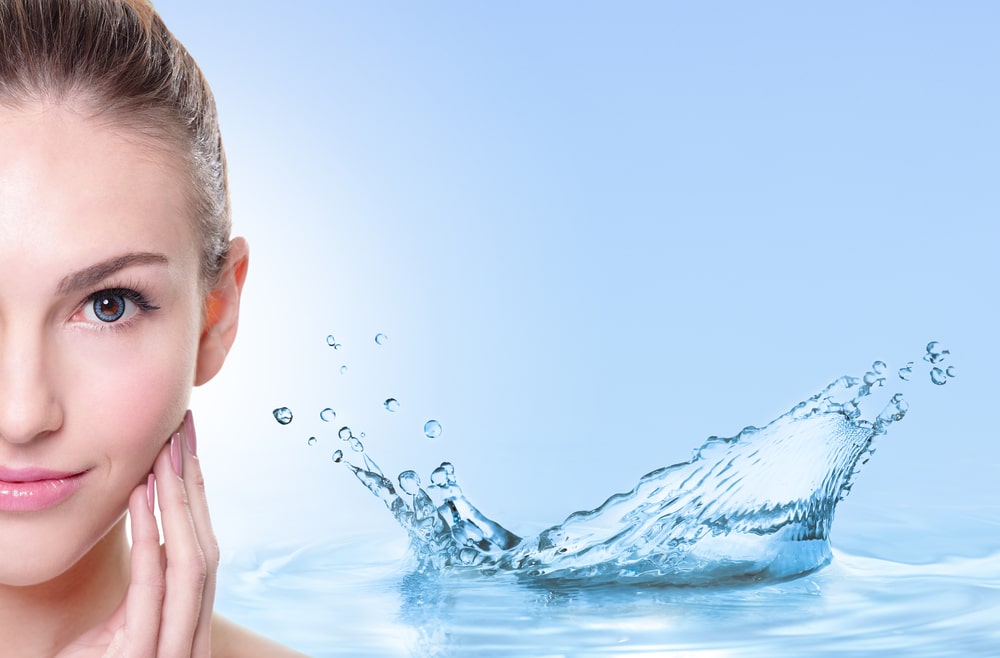Water in skin
Water is essential for the normal functioning of the skin and especially its outer layer, the stratum corneum. Loss of water from the skin must be carefully regulated, a function is dependent on the complex nature of the stratum corneum. The retention of water in the stratum corneum is dependent on two major components: (1) the presence of natural hygroscopic agents within the corneocytes (collectively referred to as natural moisturizing factor) and (2) the stratum corneum intercellular lipids orderly arranged to form a barrier to transepidermal water loss (TEWL). The water content of the stratum corneum is necessary for its proper maturation and skin desquamation. Increased TEWL impairs enzymatic functions required for normal desquamation resulting in the visible appearance of dry, flaky skin. There have been recent discoveries regarding the complex mechanisms of skin hydration. In particular, it has been discovered that glycerol, a well-known cosmetic ingredient, exists in the stratum corneum as a natural endogenous humectant. Hyaluronan, which has been regarded mainly as a dermal component, is found in the epidermis and is important for maintaining normal stratum corneum structure and epidermal barrier function. More importantly, the discovery of the existence of the water-transporting protein aquaporin-3 in the viable epidermis and the presence of tight junction structures at the junction between the stratum granulosum and stratum corneum have brought new insights into the mechanisms of skin water distribution and barrier function. The hydration level of the skin may be measured by a corneometer. It is an instrument that reproducibly and accurately determines the hydration level of the skin surface (stratum corneum).
The Measuring Principle
The measurement is based on the capacitance measurement of a dielectric medium. The Corneometer measures the change in the dielectric constant due to skin surface hydration changing the capacitance of a precision capacitor. The measurement can detect even slight changes in the hydration level. The Corneometer measures in arbitrary units from 0 (no water at all) to 120 (on water). The units have been established as so-called “Corneometer units”.
Advantages of Corneometer
- Substances on the skin (e.g. salts or residues of topically applied products) have only minimal influence due to capacitance measurement.
- It allows very quick measurement (1 s) important to avoid occlusion.
- Continuous measurements over a long time can optionally be performed.
- The measurement depth is very small (10-20 µm of the stratum corneum) to exclude the influence of deeper skin layers (e.g. from the blood vessels). Measurements on only 15 µm thick foil show only 20% of the original measurement value.
- The probe is small and lightweight for easy handling and measurement on all body sites (e.g. lips).
- The spring in the probe head ensures constant pressure on the skin enabling exact, reproducible measurements.
- The accuracy of the Corneometer probe and the penetration depth of the scattered field can be checked easily anytime.
- The probe head can quickly be cleaned after each measurement.
- Commercially available corneometers: Corneometer CM 825; Corneometer CM 820.
Make sure you also check our other amazing Article on : Sebumeter
